One of the best things you can do to improve your diet is to substitute unhealthier foods with ripe, sweet tropical fruits! This might come as a surprise in times of “the great war on sugar,” but tropical fruits are among the healthiest foods for humans.
The facts and benefits discussed here will certainly convince you to make tropical fruits an integral part of your diet!
1. Humans have evolved to eat high amounts of tropical fruits!

Humans are adapted to a high-fruit diet because we have evolved with tropical fruits as our primary food source for most of our evolutionary history (before cultural cooking). Our anatomy and physiology are that of a frugivorous primate (frugivores), and we share all main characteristics for foraging and diet with our closest living relatives (see full article here).
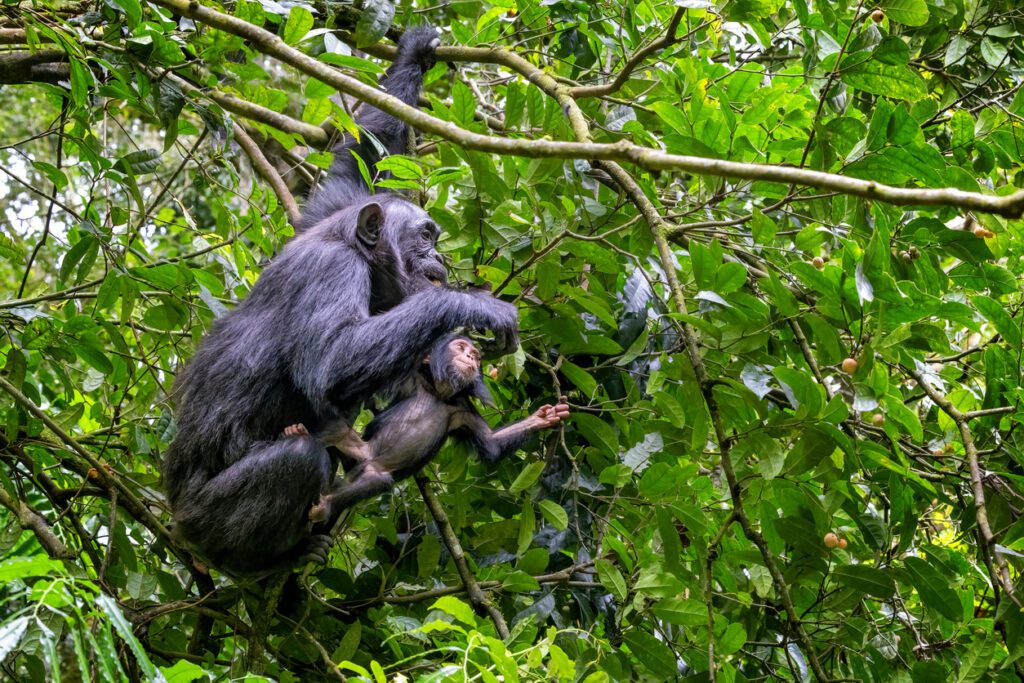
Frugivorous primates – like chimpanzees – eat around 70% of tropical fruits in the wild. At times, depending on fruit availability, they eat fruit only for an extended period (read more here)!
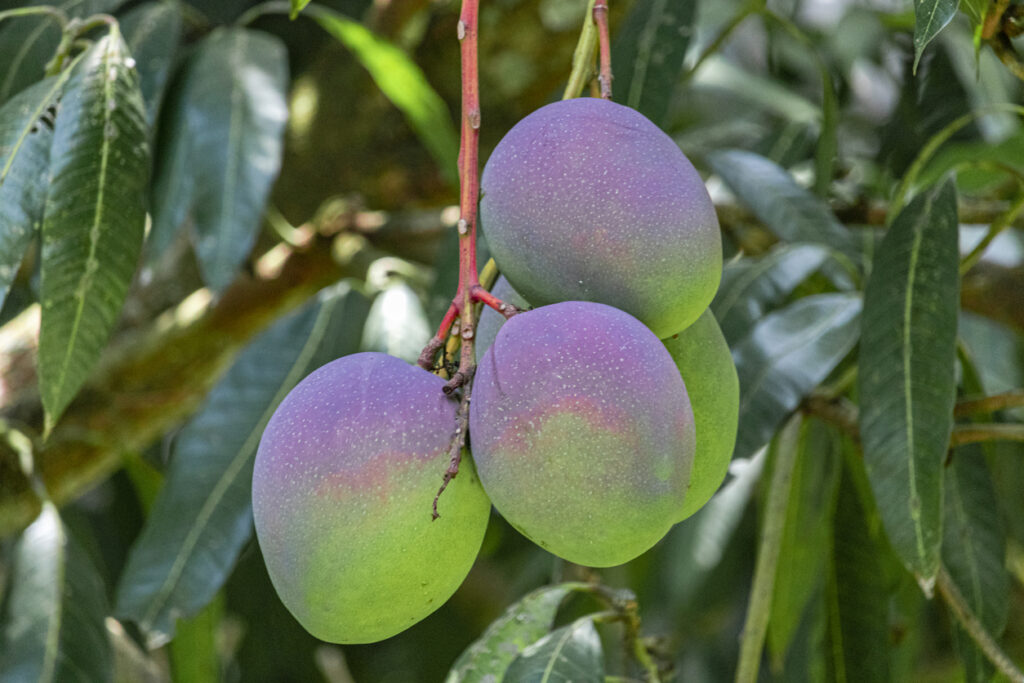
Tropical fruits are enormously diverse in size, taste, chemical composition, acidity, sweetness, colors, seed size, etc., which makes it even more surprising that most wild tropical fruits are edible for humans!
In contrast, most fruits originating in colder climates were not edible for humans before extensive cultivation and hybridization to make those fruits sweeter, bigger, and more palatable to resemble the fruits found in their original tropical habitat (read more here). This is explained by the fact that humans are a tropical species! This might be the reason we just love colorful exotic fruits! After all, Simplicity is the ultimate sophistication…
2. Tropical Fruits have extraordinarily high levels of antioxidants
All fruits contain antioxidants, but tropical fruits have higher levels of important protective molecules!
This study on Brazilian fruits summarizes that:
“…virtually unknown edible tropical fruits present significantly higher antioxidant activity when compared to temperate fruits considered to be good sources of antioxidants.”
Pereira-Netto, 2018
The explanation for this richness of phytochemicals might be that the favorable tropical climates enable plants to assimilate more energy and nutrients throughout the year. Those conditions support the extraordinary wealth, lushness, and diversity of plant life (and life in general) to evolve! These rich communities of species are in constant interactions, symbiotic relationships, and concurrence – dynamics in which an arsenal of antioxidative, polyphenolic molecules evolve: pigments, osmophorous compounds (fragrances), and secondary metabolites for protection or attraction (Singh et al. 2021).
In the human body, those functional plant compounds offer multiple health benefits and even medicinal effects against inflammation, sclerotic tissue, abnormal cells, and even rejuvenation ( Xu et al., 2017). Tropical fruits might be the foods with the highest antioxidant levels you could eat – and that you need as a tropical frugivore!
3. Tropical fruits are exceptionally nutritious, science says!
It is being increasingly realized that tropical fruits have a highly beneficial nutritional composition and are superior to temperate fruits as a food for humans in more than one aspect: Tropical fruits are naturally bigger, more nutritious, and available all year round – plus, primates have co-evolved with tropical fruits as a food source.
In nutrition science, the important health-related properties of tropical fruits are gaining attention with mounting evidence – and the general consensus about fruits being healthy. A recent review by Sayago-Ayerdi et al. concludes that “Tropical and subtropical fruits may be considered as a very important source of nutrients and bioactive compounds“:
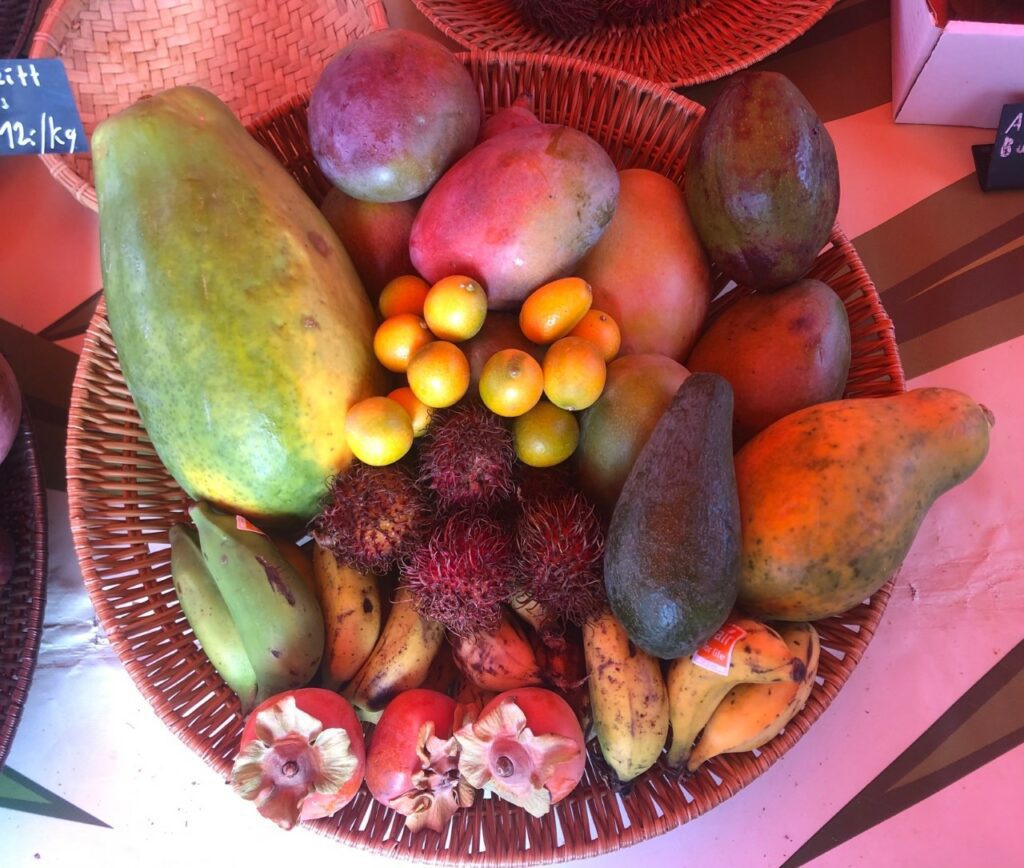
“Most of these (tropical) fruits are comestible and their consumption is growing in both national and international markets owing to the rising recognition of their nutritional and health-promoting properties as well as their organoleptic characteristics including their exclusive taste, sensory properties, and mouthfeel.”
The fact that tropical fruits are outstandingly pleasant in all kinds of sensory experiences for humans lies in the mutualistic evolutionary history of humans as frugivores and fruits as their main food source (see below, “the dispersal syndrome”).
- Low in toxicity and anti-nutrients: Most tropical fruits are edible in the wild, and “beyond their macro- and micronutrient contents, the edible and non-edible parts of tropical fruits are an important source of numerous bioactive compounds including carotenoids, sterols and stanols, phenolic compounds such as flavonoids and non-flavonoids phenolics, and the dietary fiber content.” (Sayago-Ayerdi et al., 2021).
- High in energy and amino acids: Tropical fruits naturally contain more energetic macronutrients – like simple sugars, fats, and amino acids – than temperate fruits. Tropical fruits contain up to 3.5 g of protein per 100 g, while temperate fruits usually contain much less protein. The nutritional “inferiority” is because temperate fruits were bread from being small and acidic fruits into bigger and sweeter fruits than their wild type – in order to be more suitable for human consumption. Most tropical fruits, on the other hand, have evolved naturally with primates and have remained more similar to the original, natural genotype (read more here).
- High in micronutrients:In general, tropical fruits contain (almost) all macro- and micronutrients that the body needs to function and regenerate effectively, including lesser-known (but not less important) nutrients like silica, boron, sulfur (i.e., durian fruit), chromium, manganese (i.e., açaí berry), iron, selenium and more: “Many fruits and unconventional foods are available in the tropics and represent valuable minerals sources.” Leterme et al. (2006)
As an example serves this detailed analysis of the nutrient composition of mangoes: “mango may provide enough amount of essential minerals for human health, such as calcium, iron, magnesium, phosphorus, potassium, sodium, zinc, copper, manganese, and selenium.” (Maldonado-Celis et al. 2019). Bananas are a good source of potassium and magnesium. Most tropical fruits have high quantities of vitamin C, especially acidic ones, which can boost the immune system and improve recovery after exercise. Orange-colored fruits, like mangoes and papaya, contain beta-carotene (precursor of vitamin A), which gives those fruits their color. Fatty fruits provide more fat-soluble vitamins, and overall tropical fruits are a perfect source of omega-3 fatty-acids.
To illustrate how beneficial tropical fruits are, let’s look at the most cared-for and pampered humans in terms of health: athletes! And sure enough, we find that health experts that take care of their physical fitness know the positive effects of tropical fruits and supplements:
“Based on the literatures, exercise performance can be improved by various compounds found in tropical fruits such as banana, cherry, grape, pomegranate, and watermelon. Overall, tropical fruits can aid sports performance by improving physical strength, increasing the recovery in injury, attenuate muscle soreness, and reducing fatigue.”
Chabib et al. 2020
If it’s helping the most functional individuals of our species to perform and regenerate, it probably will help us “normal mortals”, too!
4. Tropical fruits are nutritionally matched to humans: “the dispersal syndrome”
In addition to nutrition and reported health benefits, the evolutionary relationship between fruits and humans is pretty convincing: tropical fruits have co-evolved with primates (including human ancestors) via dynamics called “dispersal syndrome”, whereby fruit nutritional traits are shaped by the preferences of their consumers! Therefore many wild tropical fruits provide a nearly perfect nutritional composition for us. Read more here.
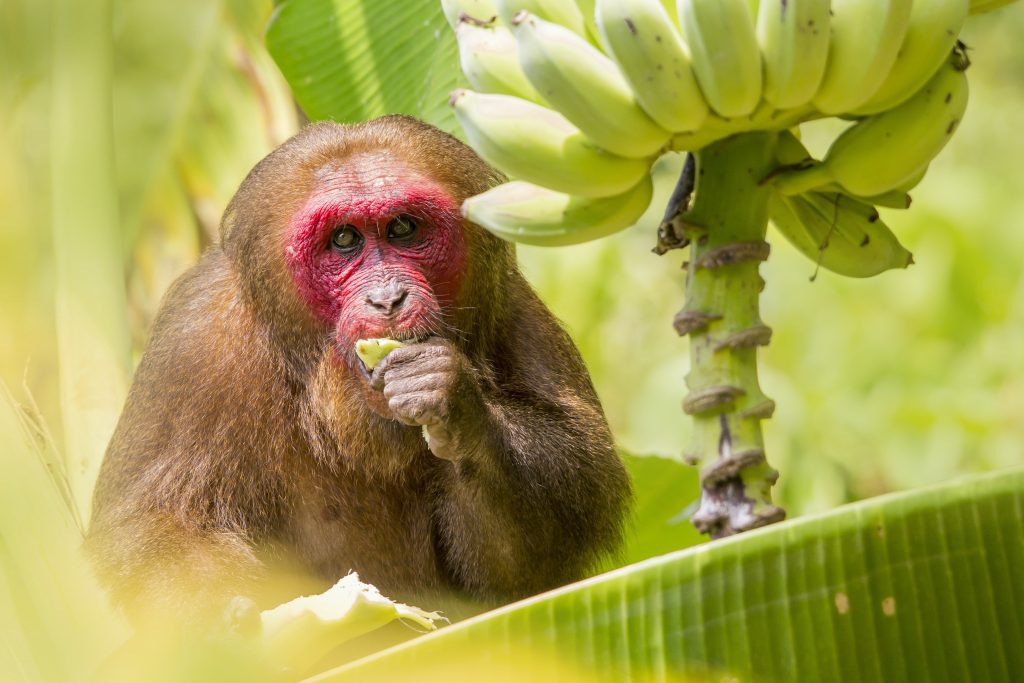
Fruits evolve because of the frugivores’ choice! The dispersal syndrome describes that the evolution of fruit traits (size, color, and scent) is driven by the choices of the animal that eats them. This is why tropical fruits taste so good! On the other hand, the seed disperser evolves anatomical and physiological traits to like, handle and digest the food, in this case, the fruit. Food choices and foraging are highly adaptive traits that significantly impact a species’ survival and reproduction.
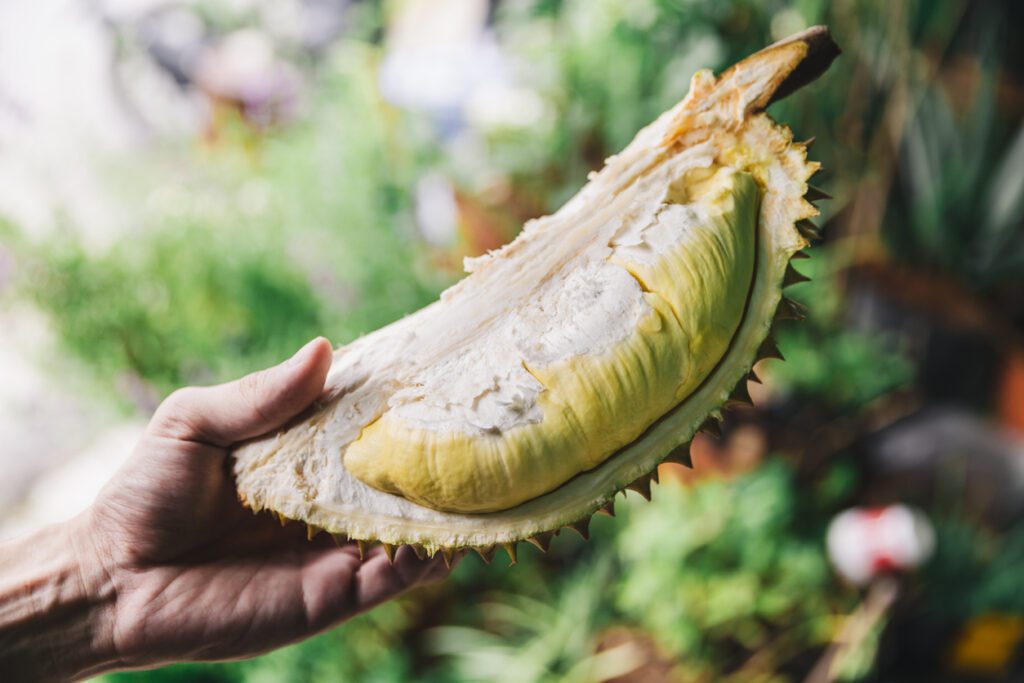
The “dispersal syndrome” allows the nutritional value of fruits to match the need of its frugivore! The outcome of the mutualistic evolution between humans and fruits is a nearly optimal nutritional profile, with a high nutritional value and very low toxicity.
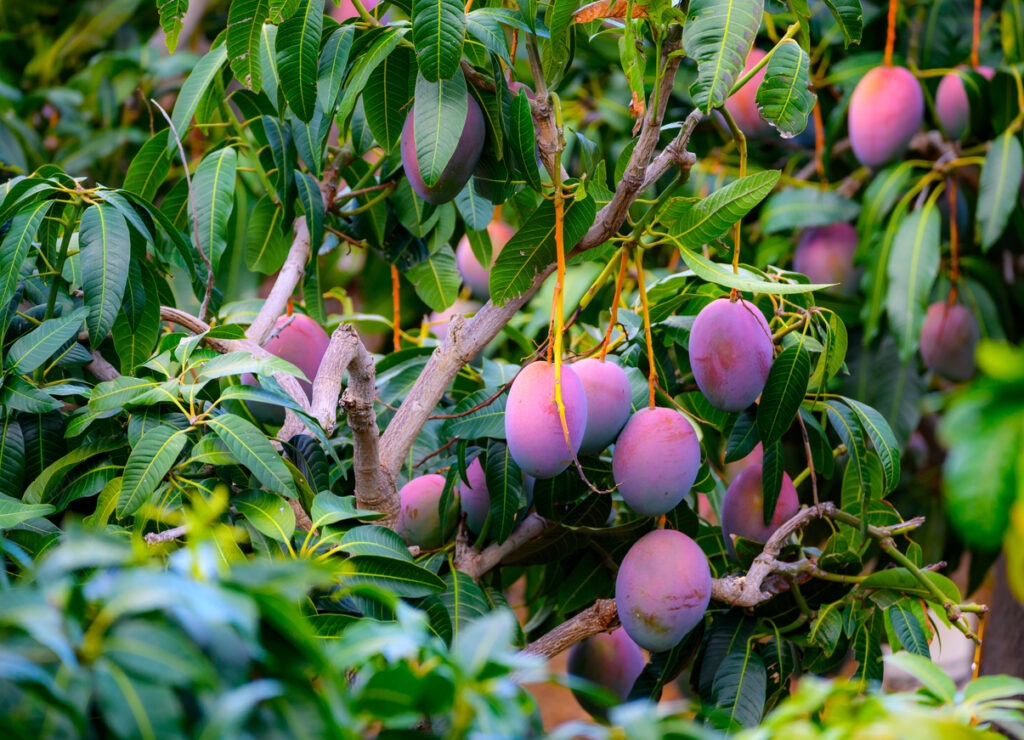
One example are omega-3 fatty acids: The ratio and amount of omega-6:3 is perfect in tropical fruits (but not in temperate fruits). Read more here.
But aren’t fruits from colder climates – temperate and acidic fruits – just as healthy? Of course, all fruits have health benefits. However, temperate fruits are not originally food for primates (see below). Humans, and all primates, originated in the tropics, and only topical habitats offer enough food to sustain bigger frugivorous animals.
5. Most wild tropical fruits are edible – unlike most temperate fruits
Most wild tropical fruits are edible for humans. This does not sound too extraordinary at first, but it certainly starts to look spectacular in the light of the fact that temperate fruits are not edible in their original, uncultivated wild form! Because most have evolved as foods for birds, not primates. Tropical fruits, on the other hand, are the natural food sources of primates.
Most of our cultivated fruits in temperate zones are hybrids. They were significantly altered in their nutritional and biological properties to be suitable as human foods and please our taste buds. Most of the fruits in the US and Europe result from crossing and extensive breeding. The wild peach, for example, is around 2.5 cm small and tastes “earthy, sweet, sour and salty”, more like “a lentil” (see here). While tropical fruits also went through cultivation and breeding for optimization, it is a fact that wild fruits are perfectly edible for humans and is the main foods of other apes, i.e., chimpanzees. It seems that tropical fruits are also quite difficult to breed for “improved” fruit traits – it is just hard to improve what evolution has already shaped to be a perfect match!
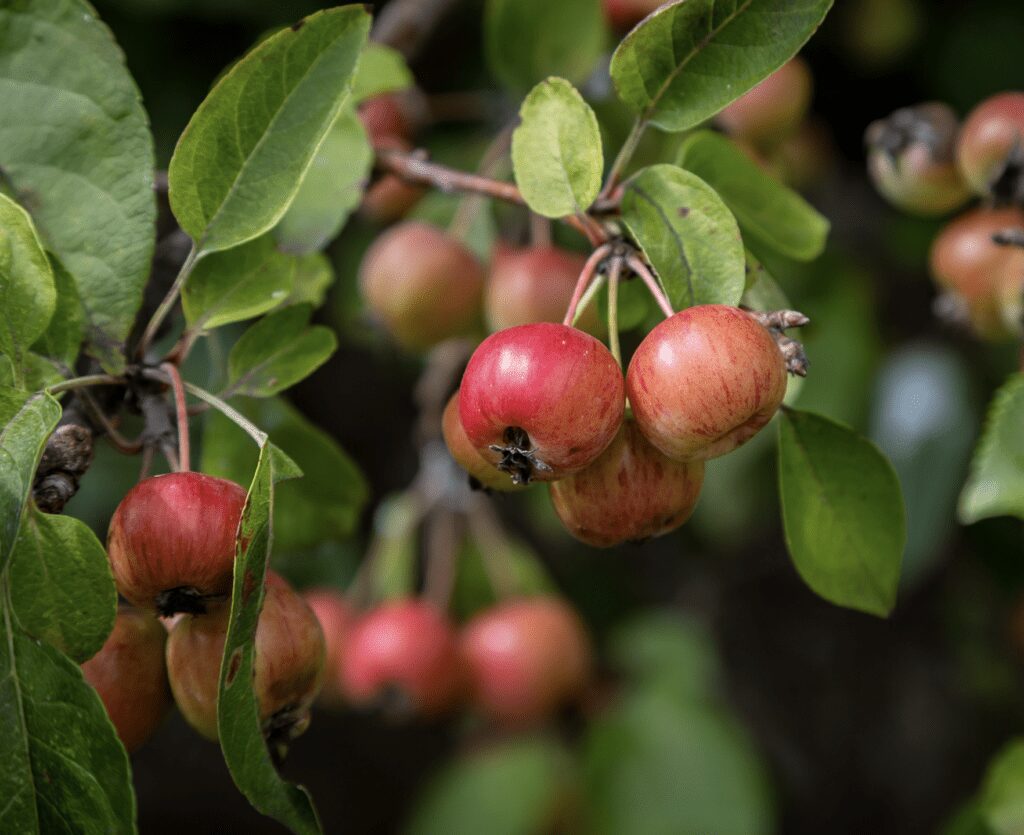
The ancient apples, for example, are small and sour, similar to crabapples before we bred them to have bigger and sweeter fruits – to resemble our tropical fruits. Crabapples have more resemblance with wild rose hip than our modern apples – and are perfect bird food during winter. This article has a detailed description of how perfect crabapples are for birds. The crabapple is just one example to explain why temperate fruits are originally bird food. Read our detailed article here.
6. Sweet, simple sugars in fruits are healthy energy
It is a very harmful misconception that sweet fruits (usually tropical fruits) are unhealthy because of their high content of simple sugars. The fear of sugar has arisen from the excess consumption of isolated sugars that have been shown to have harmful effects – like excess consumption of any isolated substances. The “toxic sugar myth” has been continuously misunderstood and pushed by the media until it got so far that we fear sweet fruits – our original foods as humans!
So what are sweet sugars in fruits to our body?
Sweet tropical fruits provide us with easy-accessible energetic nutrition – the simple sugars glucose and fructose. Those natural sugars provide the energy we need to keep our cells running and to regenerate! The natural and vital role of carbohydrates in foods is thus to provide fuel for our body: they are energetic macronutrients.
This is how important those molecules are for life: There would be no animal life without sugar! Sugar is thus the energetic basis of life, gifted to us from plants: it is literally sunshine energy stored chemically!
Fructose from fruits takes a special place in the metabolism of frugivores: we are the perfect match! Fructose is the most accessible sugar for our cells and does not cause an insulin response because fructose enters our cells without the help of the hormone: Insulin is a key that is only needed to open the cells to glucose. This means we take up sugar from fruit even better than glucose! And fructose can be utilized by many types of cells – not only liver cells, as it was falsely believed up until recently. Read more on this topic and fructose here.
7. Sweet tropical fruits are easier on teeth than acidic fruits
Sweet tropical fruits are not as acidic as most temperate fruits and thus do not task the enamel as much in the long run on a high-fruit diet:
Despite domesticating fruits for hundreds or thousands of years, there are limitations to breeding temperate and subtropic fruits in terms of acidity and sweetness. Temperate fruits are still smaller and more acidic than bigger sweet tropical fruits. For example, blueberries, nectarines, pomegranates, apples, cherries, and oranges all have a pH between around 2.9 and 4.5 (values from here). Sweet tropical fruits, like papaya, mango, cantaloupe, and bananas, range somewhere from 5 to 6.6 pH.
Eating acid or underripe fruits is also the main reason that raw vegans see dental erosion.
8. Tropical fruits have medicinal properties
People living in the tropics are aware of the power of their fruits. They are not only occasionally used as home remedies but have a long history of medicinal uses. So, how come we still see health problems in tropical regions? Because many tropical countries do not base their traditional dishes on fruits but are often heavy in animal foods, legumes, and grains. Consuming abundant tropical fruits is the key to the myriad of health benefits, not only as an additional treat or dessert (which, of course, is better than nothing!).
Besides countless reports of people adopting a diet high in fruits to boost their health, we find a growing number of studies and evidence showing the health benefits of the beautiful fruits from the tropic paradise! In fact, there is no shortage of scientific evidence backing up what tropical indigenous people have long known!
Here is a list of tropical fruits commonly consumed today that can be considered “superfruits” due to their medicinal properties:
- Açai
- Acerola
- Avocado
- Bananas
- Breadfruit
- Mangosteen
- Custard Apple
- Guava
- Durian
- Tropical Figs
- Rambutan
- Lychee
- Dragonfruit
- Papaya
- Mango
- Passionfruit
- Granadilla
- Soursop
- Starfruit
Let tropical fruits be thy food and medicine!
Conclusion
I admit, I am an exotic fruit lover! But this is not about personal taste, but about science and long-standing knowledge from the traditional use of fruits in tropical regions! Edible tropical fruits are an essential food in the human diet from a nutritional, evolutionary and biological perspective.
References
- S. Sayago-Ayerdi, D. L. García-Martínez, A. C. Ramírez-Castillo, H. R. Ramírez-Concepción, M. Viuda-Martos, Tropical fruits and their co-products as bioactive compounds and their health effects: A Review. Foods. 10, 1952 (2021). (link)
- H. A. M. Daanen, W. D. Van Marken Lichtenbelt, Human whole body cold adaptation. Temperature. 3, 104–118 (2016), doi:10.1080/23328940.2015.1135688. (link)
- A. B. Pereira-Netto, Tropical fruits as natural, exceptionally rich, sources of bioactive compounds. International Journal of Fruit Science. 18, 231–242 (2018), doi:10.1080/15538362.2018.1444532. (link)
- S. Singh, I. Kaur, R. Kariyat, The multifunctional roles of polyphenols in plant-herbivore interactions. International Journal of Molecular Sciences. 22, 1442 (2021). (link)
- D.-P. Xu et al., Natural antioxidants in foods and medicinal plants: Extraction, assessment and resources. International Journal of Molecular Sciences. 18, 96 (2017). (link)
- M. E. Maldonado-Celis et al., Chemical composition of Mango (Mangifera indica L.) fruit: Nutritional and phytochemical compounds. Frontiers in Plant Science. 10 (2019), doi:10.3389/fpls.2019.01073. (link)
- L. Chabib, A. M. Trianloka, A. U. Hidayat, R. Awaluddin, F. Firmansyah, Potential tropical fruits to aid sports performance and its prospect to be developed into Nano Supplement. IOP Conference Series: Earth and Environmental Science. 448, 012019 (2020). (link)
- K. Valenta, O. Nevo, The dispersal syndrome hypothesis: How animals shaped fruit traits, and how they did not. Functional Ecology. 34, 1158–1169 (2020), doi:10.1111/1365-2435.13564. (link)
- K. L. Kumawat, A. K. Gupta, J. I. Mir, Distant Hybridization for Improvement of Temperate Fruits and Nuts. Distant hybridization in horticultural crops (p.25-44) (2017) (link)
- E. Brodwin, Here’s what fruits and vegetables looked like before we domesticated them. Business Insider (available at https://www.businessinsider.com/what-foods-looked-like-before-genetic-modification?r=US&IR=T).
- M. Mathiazhagan, B. Chidambara, L. R. Hunashikatti, K. V. Ravishankar, Genomic approaches for improvement of tropical fruits: Fruit quality, shelf life and nutrient content. Genes. 12, 1881 (2021). (link)
- M. Yanny, Crabapples for birds. JNI Knowledgebase (2021) (available at https://kb.jniplants.com/crabapples-for-birds/). (link)
- Ph values of common foods and ingredients – clemson university (available at https://www.clemson.edu/extension/food/food2market/documents/ph_of_common_foods.pdf). (link)


Add Comment